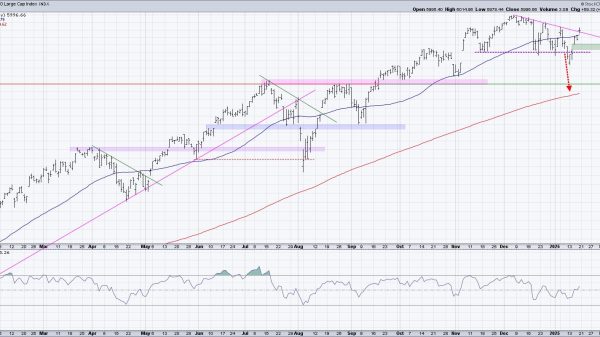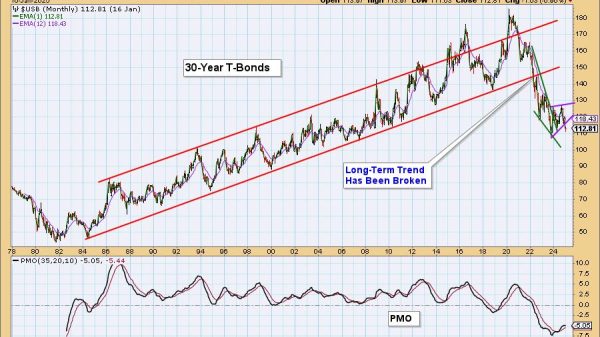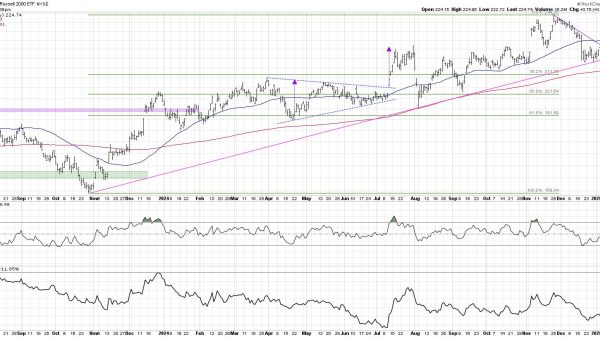It is widely held that a growing economy requires a growing money stock because economic growth increases demand for money. Many economists also believe that failing to accommodate the increase in the demand for money leads to a decline in consumer prices. This could destabilize the economy and produce an economic recession or even a depression.
Some economists who follow Milton Friedman—also known as monetarists—want the central bank to target the money supply growth rate to a fixed percentage. They hold that if this percentage is maintained over a prolonged period, it will create economic stability.
The idea that money must grow to support economic growth implies that money sustains economic activity. However, money’s main job is to be a medium of exchange, not sustain economic activity. Instead, economic sustenance is provided by saved consumer goods.
As for money, many different goods have served as a medium of exchange. Ludwig von Mises wrote that over time “there would be an inevitable tendency for the less marketable of the series of goods used as media of exchange to be one by one rejected until at last only a single commodity remained, which was universally employed as a medium of exchange; in a word, money.”
Over thousands of years, people have settled on gold as their preferred medium of exchange. Most economists, while accepting this historical evolution, doubt that gold can serve as money in a modern economy because of gold’s limited supply.
This, in turn, risks destabilizing the economy. Hence, most economists, even those who express support toward the idea of a free market, believe the government must control the money supply.
What Do We Mean by Demand for Money?
Demand for money is the demand for money’s purchasing power. After all, they don’t want more money for its own sake; they want more purchasing power. In a free market, supply and demand determine the price of money. If there is less money its exchange value will increase, and the exchange value will fall when there is more money, everything else being equal.
Within a free market, there cannot be “too little” or “too much” money. If the market is allowed to clear, no shortage or surplus of money can emerge. Once the market has chosen a particular commodity as money, the stock of this commodity will always be sufficient to secure what money provides. Hence, in a free market, the whole idea of an optimum growth rate of money is absurd.
According to Mises, “The services which money renders can be neither improved nor repaired by changing the supply of money. . . . The quantity of money available in the whole economy is always sufficient to secure for everybody all that money does and can do.”
Yet, even if we were to agree that the gold standard was better than the present monetary system, surely we must be practical and in tune with the current reality. In today’s world, we have central banks and are not on the gold standard. Given these facts, what then should be the correct money supply growth rate?
From Commodity Money to Paper Money
Originally, paper money was not regarded as money but as a representation of gold. Paper certificates represented claims on the gold stored with the banks. The holders of paper certificates could convert them into gold, but because individuals found it more convenient to use paper certificates, these certificates came to be regarded as money.
Paper certificates accepted as a medium of exchange open the way for fraud. Banks could now be tempted to boost their profits by lending certificates not covered by gold. In a free-market economy, a bank that overissues paper certificates will quickly find that the exchange value of its certificates will decline. To protect their purchasing power, holders of the overissued certificates would likely attempt to convert them back to gold.
If all of them were to demand gold back at the same time, this would bankrupt the bank. In a free, competitive market, the threat of bankruptcy would restrain banks from issuing paper certificates unbacked by gold. This means that in a free-market economy, paper money cannot assume a “life of its own” and become independent of commodity money.
The government, however, can bypass the free-market discipline. It can decree that overissued banks need not redeem paper certificates into gold. Once banks are not obliged to redeem paper certificates into gold, opportunities for large profits create incentives to pursue an unrestrained expansion of the supply of paper certificates.
This uncontrolled expansion of paper certificates increases the likelihood of setting off price increases that could break down a market economy. To prevent such a breakdown, the supply of paper money must be managed, which can be done by establishing a monopoly central bank that manages the supply of paper money.
To assert its authority, the central bank introduces paper certificates which replace the bank certificates. The central bank’s certificate purchasing power is established because paper certificates are exchanged for the central bank’s money at a fixed rate. The central bank paper certificates are fully backed by banks’ certificates, which have the historical link to gold.
The central bank’s paper certificates, which are legal tender, also serve as reserve assets for banks. This enables the central bank to set a limit on the credit expansion by the banking system by setting regulatory ratios of reserves to demand deposits.
It would then appear that the central bank could manage and stabilize the monetary system, but that is not true. The present paper monetary system emerged because central authorities made it legal for the overissued banks not to redeem paper certificates into gold.
To manage the system, the central bank must constantly generate money out of nothing to prevent banks from bankrupting each other during the clearance of checks. This leads to persistent declines in the money’s purchasing power, which destabilizes the entire monetary system.
Even Milton Friedman’s scheme to fix the money growth rate at a given percentage will not eliminate the problem. A fixed percentage growth is still money growth, which leads to the exchange of nothing for something, setting off boom-bust cycles.
What about keeping the current stock of paper money unchanged? Would that not do the trick? An unchanged money stock will cause an almost immediate breakdown of the present monetary system. The present system survives because the central bank, by means of monetary injections, prevents the fractional reserve banks from going bankrupt.
Central banks must always resort to large monetary injections during political or economic shocks. How long the central bank can keep the present system going depends upon the state of savings. If savings are growing, the central bank can keep the system alive.
Once savings begin to stagnate or even shrink, no amount of monetary pumping can prevent the system from imploding.
Conclusion
Because the present monetary system is fundamentally unstable, there cannot be a “correct” money supply growth rate. The present monetary system emerged because central authorities allowed the practice of issuing banknotes not covered by gold. To sustain such a system, the central bank was introduced. By means of ongoing monetary management, the central bank’s job is to prevent banks from bankrupting each other during the clearance of checks. Whether the central bank injects money in accordance with economic activity or fixes the money supply growth rate, it continuously destabilizes the system.























